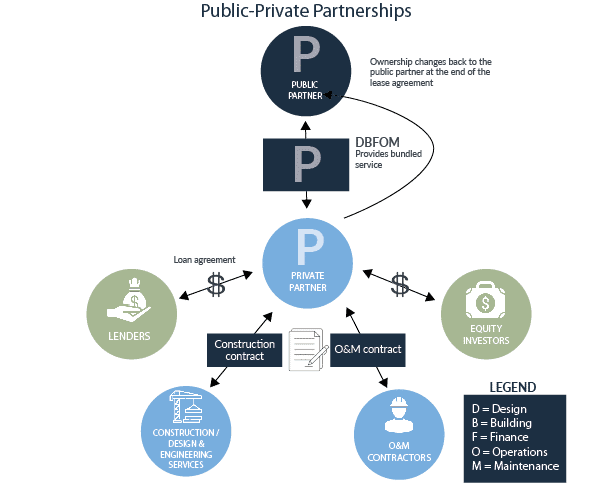Public-private partnerships, also referred to as P3s, involve a relationship between a public entity and a private developer, offering financial resources. These financing structures are most regularly seen in higher education, such as student housing, parking, dining, utilities, student centers, and athletics facilities. Financing a project through a public-private partnership offers many benefits to ownership; most notably, these financing structures move projects to completion much sooner and, in some cases, make them a possibility in the first place.
A public-private partnership is not a project delivery method, but rather a funding mechanism leveraged to fund virtually any project regardless of delivery method: design-build, construction manager at-risk, or other. Hourigan has collaborated on and pursued many P3 projects over the years. Sitting down with Hourigan’s resident P3 expert, Elliott Byers, we share our knowledge and lessons learned from past experiences.
Q: What is a public-private partnership and why should municipalities or universities consider this type of development structure?
A: Public-private partnerships are just that. A partnership between a public entity and private developer, offering financial resources. This financing methodology is unique in its ability to deliver higher than average standards of construction and design practices. Many times, municipalities and universities face budgetary constraints and are tied to low-cost providers. Lowest bid doesn’t equate to highest quality; as such, these entities aren’t able to receive best-in-class design and construction results. P3s are an ideal way to help expediate a project to the market without going through typical governmental channels of bond procurement procurement and referendums.

Q: How are these deals funded?
A: They are funded by private investments or other equity partnerships. Agencies can borrow money from the state. Bonds through the state come in as a trickle effect, where money from the bank comes in at about 80% now and then the rest later.
Q: What impacts might an owner anticipate related to a potential P3 deal?
A: P3s offer myriad benefits that impact the success of a project:
Q: What are the potential risks of a P3 project?
A: P3s are driven by finance and are more controlled. If an agency can share control of the design and overall process, then a P3 is the way to go.
Q: Are there project types better suited to this structure?
A: Municipalities: Heavy Civil, Roadway, Wastewater, Utility. As well as higher education such as student housing, parking, dining, utilities, student centers, and athletics facilities.
Q: What are some tips to ensure a seamless execution?
A: A good team is critical to the success of the project. Having a trusted partner at the table is pivotal because you are in the long haul with that group of individuals. It is important that you share the same vision with your team and that you are all on the same page from the beginning.
Q: What’s the community engagement like for projects like this?
A: As government agencies, these projects must have buy-in from the public. Once the project goes public then the community has a say on whether they want to see this job commence. The most popular way the community shows their opinions is by voting for or against it or attending town hall meetings. Having the community backing you is important because they are going to be able to help you get the job.
Q: What partners should be engaged on this type of structure?
A: Financing, legal for the structure, design & engineering, and construction & development
Q: What should you look for in a P3 partner?
A: You should look for a shared strategic vision, the ability to work seamlessly together and having local and trusted partnerships is key. You will be working with these individuals for an extended amount of time and having a team that is collaboratively working together in agreeance will make this process much smoother.
Q: Where should I go to learn more information?
A: We have a Public-Private Partnerships Blog post on our website that goes into more detail on how public-private partnerships work and how they are successful.
Previous Post Next Post